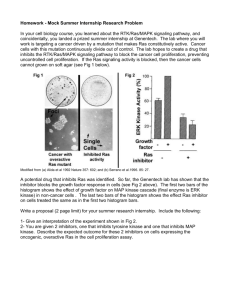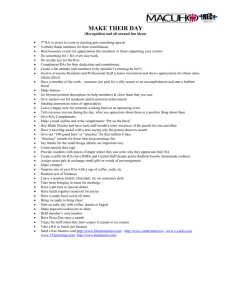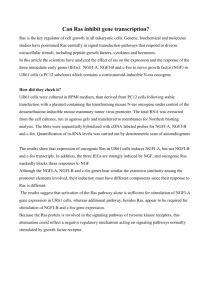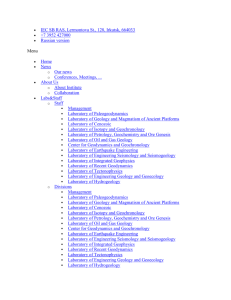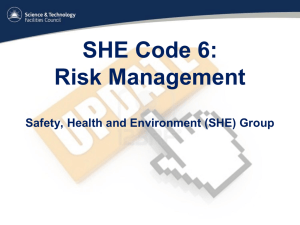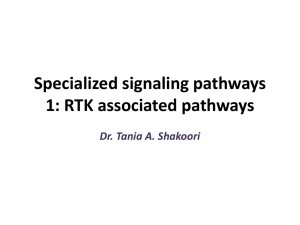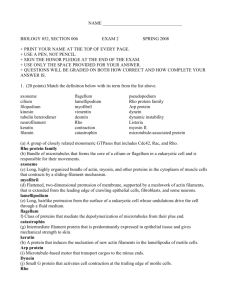STK33 Kinase Inhibitor BRD-8899 Has No Effect
advertisement
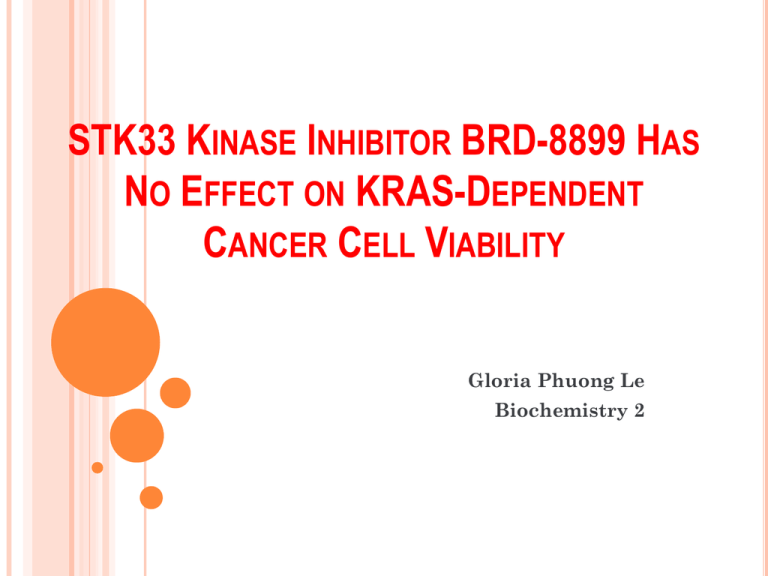
STK33 KINASE INHIBITOR BRD-8899 HAS NO EFFECT ON KRAS-DEPENDENT CANCER CELL VIABILITY Gloria Phuong Le Biochemistry 2 What is the function of the RAS protein family? RAS PROTEIN FAMILY Published in: Julian Downward; Nature 2002, 3, 11-22. DOI: 10.1038/nrc969 Copyright © 2002 Nature Publishing Group RAS PROTEIN FAMILY RAS proteins have the ability to regulate cell growth. They were discovered as proteins encoded by retroviral oncogenes that had been hijacked from the host genome by the Kirsten and Harvey rat sarcoma viruses. RAS PROTEIN FAMILY Three members: HRAS, KRAS, and NRAS Only KRAS is expressed in all cell types Post-translational modification is required for activation RAS proteins are found to be activated in human tumors. Activated RAS leads to the deregulation of: Tumor cell growth Programmed cell death and invasiveness The inability to induce new blood-vessel formation RAS PROTEIN FAMILY Published in: Julian Downward; Nature 2002, 3, 11-22. DOI: 10.1038/nrc969 Copyright © 2002 Nature Publishing Group EARLY ATTEMPTS TO TARGET UPSTREAM RAS SIGNALING PATHWAY Two approaches: Farnesyltransferase inhibitor Target the synthesis of RAS using antisense oligonucleotides RAS PROTEIN FAMILY Published in: Julian Downward; Nature 2002, 3, 11-22. DOI: 10.1038/nrc969 Copyright © 2002 Nature Publishing Group UPSTREAM SIGNALING TARGET The first: FT-inhibitors KRAS and NRAS can still be geranylgeranylated as a ‘rescue’ process KRAS is the most commonly mutated RAS isoform in human tumors Second: antisense oligonucleotide target HRAS target (phase II no efficacy against lung carcinoma) KRAS is not an approachable target (ubiquitous) Both methods failed! SO FAR… RAS upstream signaling is non-druggable Kinase inhibitors of RAS effector pathways is a promising approach CANCER CELLS OVERVIEW… Cancer cells are blocked from normal cell proliferation. They display low-level of cell-death signals They may develop secondary dependencies on non-oncogenic genes and other substances not commonly found in normal cells. This is the basis of synthetic lethal approach What is synthetic lethal approach? SYNTHETIC LETHAL APPROACH Because of cancer cell secondary dependencies on “strange” substances not commonly found in normal cells Alteration of these genes results in selective apoptosis of cancer cells This definition is adapted from: Scholl et al. ; Cell 2009, 137, 821-834. DOI: 10.1016/j.cell.2009.03.017 Copyright © 2009 Elsevier Inc. WHAT IS SYNTHETIC LETHALITY Mutations in 2 or more genes causes cells death whereas mutation in just one leaves cell viable Used results from a previous experiment that implicated STK33 kinase knock down with KRAS dependent cancer death KRAS MUTATION The most commonly mutated human oncogene. What is an oncogene Implicated in 30 % lung, 50% colon, and 90% pancreas adenocarcinoma. HIGH THROUGHPUT SCREENING Run millions of experiments at the same Use a micro titer plate. time Plate Well arranged in 8 by 12 9mm well contain DMSO and other reagents Controlled manually or by robots HIGH THROUGHPUT SCREENING Wells used in high throughput screening STK33 HIGH THROUGHPUT SCREENING 27,500 102 95 compounds initially used primary hits replicate hits Fasudil finally chosen due to its low micro molar potency and selective kinase inhibition. WHAT IS FASUDIL Rho-associated protien kinase (ROCK) inhibitor. ROCK is a kinase that belongs to the serine/threonine kinase family. Also a vasodilator use to treat cerebral vasospasm and improve cognitive decline in stroke victims amongst other things. FASUDIL BRD7446 AND BRD8899 FASUDIL BRD 8899 After a few manipulations BRD 8899 was produced Had 200 fold potency compared to BRD 7446 Ready for in vivo testing. Testing fails . WHY
